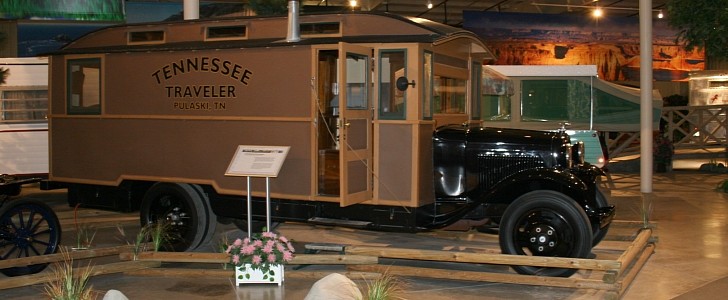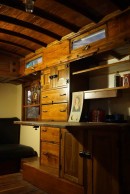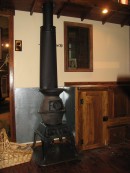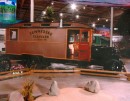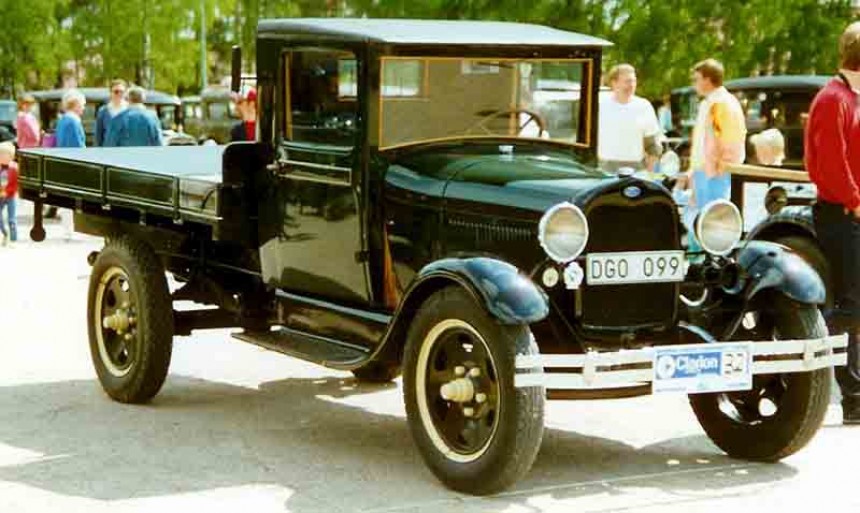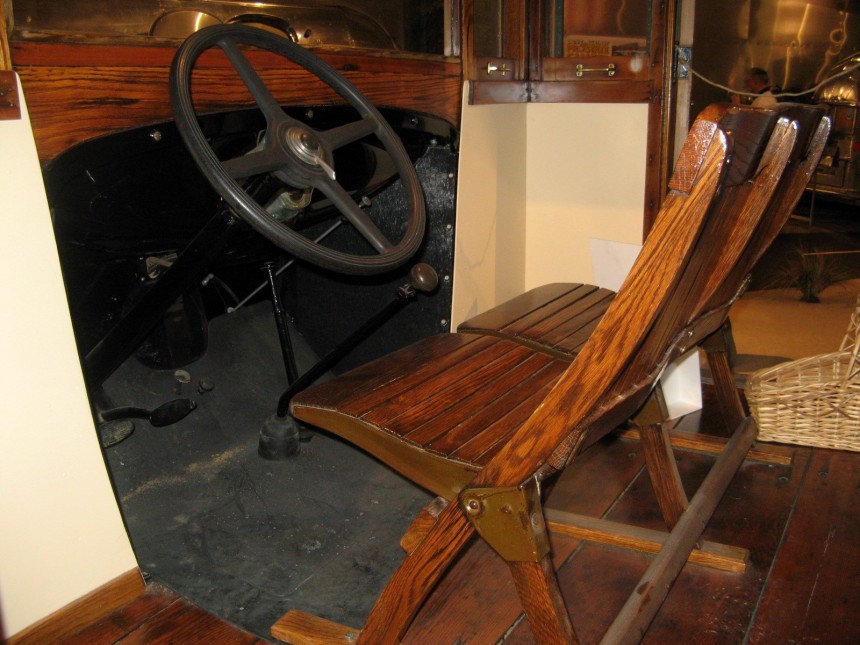Like most new arrivals on any market, in the early days of RV-ing, mobile tiny homes were neither affordable nor too many in number. The homemade 1931 Tennessee Traveler is a good example in this sense.
Today, after more than two years of international health crisis and having to adapt to the dramatic lifestyle changes it imposed, living (and working) on the road is an increasingly popular alternative. Consequently, prices have dropped as more options were being included.
Back in the early days of the motorhome, affordability wasn’t a non-existent issue. Only the richest could afford an RV, and even they had to go to great pains to get their hands on one. Ford had started producing housecars based on the Model A in the late 1920s, but they were few and far between and very expensive. Those who did have the cash but could still not secure one were left with just one option: have a specialist build them a unit.
This was the case with this still-impeccable and still-impressive Tennessee Traveler residing at the prestigious Recreational Vehicle / Motor Home (RV/MH) Hall of Fame Museum in Elkhart, Indiana, as part of the permanent collection. It remains one of the crown jewels on display, along with several other early-day RVs that we covered on previous occasions, including the Ford A Housecar, Ford’s first attempt at a mass-production RV.
Like them, it offers a clear look into a blurry past, to a time when roads were a luxury – but a few lucky folks got to experience a not-novel way of traveling in a novel vehicle.
The Tennessee Traveler is called this way because it was converted by a specialist from Pulaski, Tennessee. It’s based on a Ford Model AA truck, which was introduced in 1927 and remained in production until 1932. Using the same engine as the Model A, the Model AA was a heavy-duty truck that was used for a variety of purposes, including pickup trucks, buses, and ambulances. For the very rich, it was the perfect starting point for their new mobile home.
Powered by the 201-cubic-inch (3.3 L) I4 engine from the Model A, the truck had a maximum of 40 hp and a cruising speed of 25-30 mph (40.2-48.2 kph). In other words, the Tennessee Traveler moved slower on the road than a modern U.S. electric bike, but boy did it deliver on creature comforts!
Like most custom housecars of the day, this one was also designed and built like a proper house. The all-wood interior included yellow pine hardwood floors and oak and yellow poplar for the cabinets, which had heavy brass finishes. There was a leather couch at the rear, which converted into a two-person bed, and a kitchen with plenty of storage options on the driver's side.
Amenities were rudimentary by today’s standards, but they were luxurious for the time: a two-burner oven, an ice box, and cupboards and drawers aplenty. Opposite the kitchen was even more storage, a wood-burning stove, and even a mirror hanging on the wall. Considering the speed of the rig, the owners were not afraid of risking seven years of bad luck.
The cabin was in sharp contrast to the rest of the place, with the front seats being a wooden bench. The unit was discovered in 1999 in a barn in Athens, Alabama, and was painfully restored over the next four years. In the process, the wooden bench was replaced with wooden seats. They still look very uncomfortable for rides longer than half an hour (tops), but at least they have backrests.
When the Tennessee Traveler was discovered abandoned in the barn, the engine was still running despite the years of neglect. This may sound surprising, but not if you know anything of the Model AA’s reliability: many of these trucks are still around in countries like Cuba and Uruguay. In the U.S., they’re highly sought-after collectibles, and the Model A Restorers Club and the Model A Ford Club of America, along with the Ford Model AA Truck Club, help collectors get their units in top shape.
Put it differently, this Tennessee Traveler that you can see in the gallery (or in person at the museum, if you’re in the area) is an automotive icon. Perhaps it’s not the most glamorous or fanciest, but it’s an icon nonetheless.
Back in the early days of the motorhome, affordability wasn’t a non-existent issue. Only the richest could afford an RV, and even they had to go to great pains to get their hands on one. Ford had started producing housecars based on the Model A in the late 1920s, but they were few and far between and very expensive. Those who did have the cash but could still not secure one were left with just one option: have a specialist build them a unit.
This was the case with this still-impeccable and still-impressive Tennessee Traveler residing at the prestigious Recreational Vehicle / Motor Home (RV/MH) Hall of Fame Museum in Elkhart, Indiana, as part of the permanent collection. It remains one of the crown jewels on display, along with several other early-day RVs that we covered on previous occasions, including the Ford A Housecar, Ford’s first attempt at a mass-production RV.
The Tennessee Traveler is called this way because it was converted by a specialist from Pulaski, Tennessee. It’s based on a Ford Model AA truck, which was introduced in 1927 and remained in production until 1932. Using the same engine as the Model A, the Model AA was a heavy-duty truck that was used for a variety of purposes, including pickup trucks, buses, and ambulances. For the very rich, it was the perfect starting point for their new mobile home.
Powered by the 201-cubic-inch (3.3 L) I4 engine from the Model A, the truck had a maximum of 40 hp and a cruising speed of 25-30 mph (40.2-48.2 kph). In other words, the Tennessee Traveler moved slower on the road than a modern U.S. electric bike, but boy did it deliver on creature comforts!
Like most custom housecars of the day, this one was also designed and built like a proper house. The all-wood interior included yellow pine hardwood floors and oak and yellow poplar for the cabinets, which had heavy brass finishes. There was a leather couch at the rear, which converted into a two-person bed, and a kitchen with plenty of storage options on the driver's side.
The cabin was in sharp contrast to the rest of the place, with the front seats being a wooden bench. The unit was discovered in 1999 in a barn in Athens, Alabama, and was painfully restored over the next four years. In the process, the wooden bench was replaced with wooden seats. They still look very uncomfortable for rides longer than half an hour (tops), but at least they have backrests.
When the Tennessee Traveler was discovered abandoned in the barn, the engine was still running despite the years of neglect. This may sound surprising, but not if you know anything of the Model AA’s reliability: many of these trucks are still around in countries like Cuba and Uruguay. In the U.S., they’re highly sought-after collectibles, and the Model A Restorers Club and the Model A Ford Club of America, along with the Ford Model AA Truck Club, help collectors get their units in top shape.
Put it differently, this Tennessee Traveler that you can see in the gallery (or in person at the museum, if you’re in the area) is an automotive icon. Perhaps it’s not the most glamorous or fanciest, but it’s an icon nonetheless.
